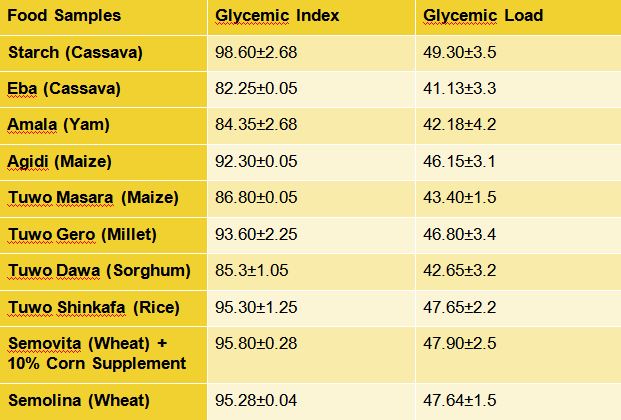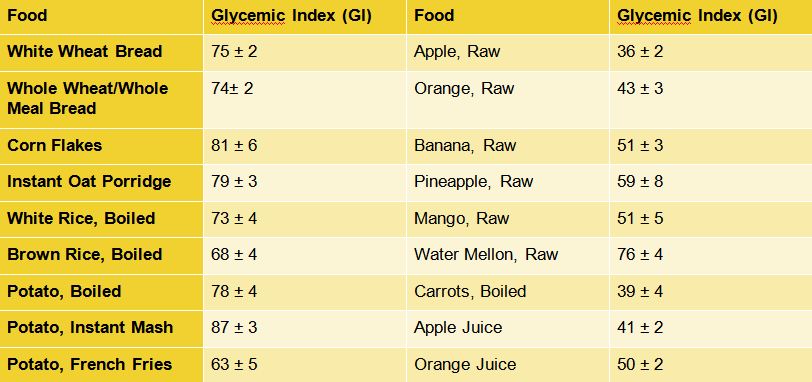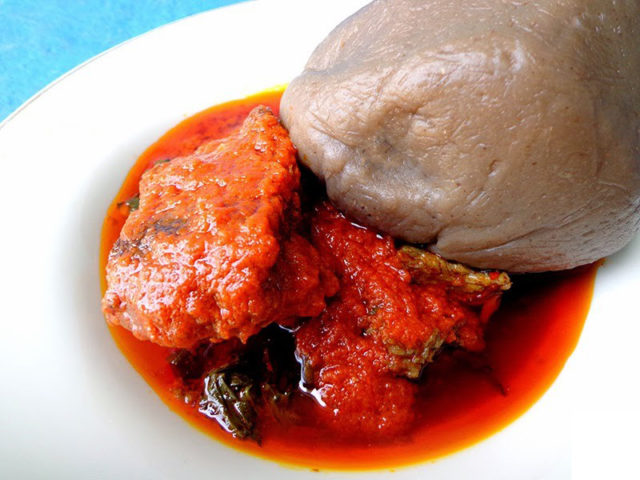 As Nigerians, no matter where we come from, where we live, or what languages we speak, we eat swallow food: amala, akpu, eba, fufu, pounded yam, semovita, and tuwo. When we party in Lagos, in London, or in Los Angeles, swallow food is on the menu.
As Nigerians, no matter where we come from, where we live, or what languages we speak, we eat swallow food: amala, akpu, eba, fufu, pounded yam, semovita, and tuwo. When we party in Lagos, in London, or in Los Angeles, swallow food is on the menu.
We eat swallow food, and processed foods: burgers, French fries, fried chicken, cereal, muffins, cake, cookies, and ice cream. As for drinks, we prefer soda to water.
We are aware of the health risks of habitual consumption of nutrient-poor processed food and carbonated drinks with added sugar: metabolic syndrome, obesity, high cholesterol, hypertension, and chronic cardiovascular disease.
What most of us are not aware of is the health risks of the food of our forebears. We know that processed food and carbonated drinks raise blood sugar to harmful levels, but we do not know that swallow food does the same thing. Researchers have discovered that truth by conducting studies on a variety of swallow foods.
To understand the studies, it will help to know the meanings of the terms I will use for illustration: Glycemic index- a measure of how high a given food, compared to a reference food, raises the blood sugar level; and Glycemic load- a function of how high a given food raises blood sugar level (compared to a reference food) and how much of the food is consumed.
Omoregie and Osagie conducted a study at the University of Benin. Cassava tubers, yam tubers and local cereals were processed by cooking (boiling, roasting, frying, steaming, baking, autoclaving), drying, mashing, grinding, and fermentation. Using fifty healthy people and ten food samples, the glycemic index and glycemic load were determined and tabulated as shown below.
Glycemic Index and Glycemic Load of the Processed Food By Omoregie and Osagie

Values are mean ± SEM (n=3 determination) Table 1
For Comparison: International Tables of Glycemic Index and Glycemic Load Values 2008

Data are means ± SEM Table 2
If you think white wheat bread (GI 75) is unhealthy, what do you think of eba (GI 82.25)? What of tuwo masara (GI 86.80)? What do you think about semovita (GI 95.80)?
If eating potato french fries (GI 63) or Corn flakes (GI 81) makes you worry about diabetes, hypertension, obesity, and chronic cardiovascular diseases, consider amala (GI 84.35), agidi (GI 92.30), semolina (GI 95.28), and tuwo shinkafa (GI 95.30).
If the suggestion that amala or semovita may not be healthy for you makes you wonder why your ancestors could eat swallow food but you cannot, you are not alone.
People have told me about family members who ate traditional foods with no ill effects. A man said, “My grandfather ate pounded yam every day, and he lived till he was 102 years old.” Another said, “My grandmother ate amala for breakfast, drank ogi (maize) for lunch, and ate eba for dinner all the time and lived for 96 years.” However, our ancestors lived in a different time.
In their time, they could eat eba, eat tuwo, and eat pounded yam because of the other things they ate. They had no means of refrigeration, so they harvested or bought just enough fresh vegetables to cook for the day. They climbed trees to pluck fruit in season, and ate their fill right under the tree. When they bought food from the market, the produce was fresh and fully ripe. Our ancestors had no means to extract juice, so they drank water. The beef they ate was grass fed, chicken was free range, and fish wild caught. Such food items are healthy due to high ratio of omega 3 fatty acids to omega 6 fatty acids.
In their time, walking was a way of life. They walked to their farms, walked to visit their friends and their families, and walked to their markets. They walked without thinking about it. They just walked. They walked everywhere.
In our time, we cannot afford to eat unhealthy, high glycemic, swallow food alongside the countless unhealthy, high glycemic foods we eat. We eat grains and grain products: rice, oat meal, bread, croissants, muffins, corn flakes, waffles, etc. We snack on cookies, candy, ice cream and chocolate. Fruits are not eaten fresh, but after storage and shipment across the country, across the world. We drink juice with added sugar, not water. We eat grain fed, not grass fed beef; caged, not free range chicken; farmed, not wild caught fish.
In our time, we would rather sit on the couch and watch television than spend time moving our bodies. A man seated on the couch a few feet away from the kitchen on the first floor will call his daughter to come down from the upper floor to get him a glass of water from the kitchen instead of retrieving it himself. And we would rather drive than walk. We drive to work, drive to the mall, and drive to Church. We drive to our neighbors, friends, and families. Sometimes, we are even too lazy to drive. A man recently told my wife, “I have not visited you because your house is too far.” My house is just a thirty-minute drive from his!
To be healthy, we must cut down or eliminate swallow food from our diets. We need to eat variety of raw vegetables, fruits, grass fed beef, free range chicken, and wild caught fish. We should leave the car key at home to walk, run, jump or swim. We must change our way of life.
That is what I began to do in January 2017. Except when I travel out of state or out of the country, grains, grain products, tubers and tuber products are no longer on my menu. I have removed tuwo, amala, pounded yam and oat meal from my diet. I eat raw vegetables and fruits. I snack on nuts and fruits. I eat heathy beef, chicken, and fish. And I walk and go to the gym. Although I cannot eat as my ancestors ate, I can be as healthy as they were.
 REFERENCES:
REFERENCES:
1.Atkinson, Fiona S; Foster-Powell, Kay; and Brand-Miller, Jennie C.
International Tables of Glycemic Index and Glycemic Load Values: 2008
Diabetes care 2008 Dec; 31(12):2281-2283
2. Omoregie, E.S. and Osagie, A.U
Glycemic Indices and Glycemic Load of Some Nigerian Foods
Pakistan Journal of Nutrition 7 (5): 710-716, 2008
3. Venn BJ, Green TJ
Glycemic Index and Glycemic Load: Measurement and their effect on Diet-Disease Relationship
Eur J Clin Nutri. 2007 Dec; 61 Suppl 1: S122-31. Review.








Swallow is just always is the best joor. Lol
What do we eat if all our food are this bad. The confusion is too much.in some they tell you Amala,ogi,ofada rice are good.in another work they are bad while the confusion.